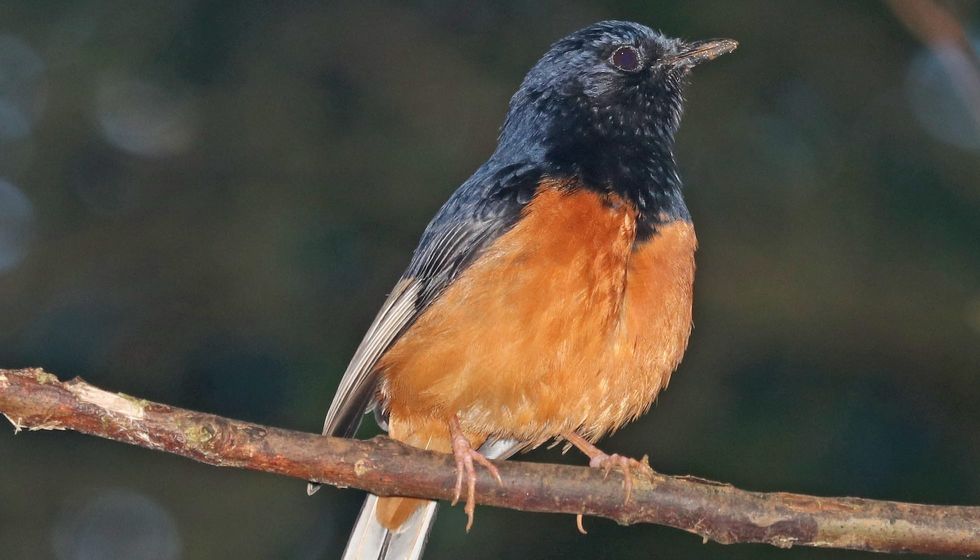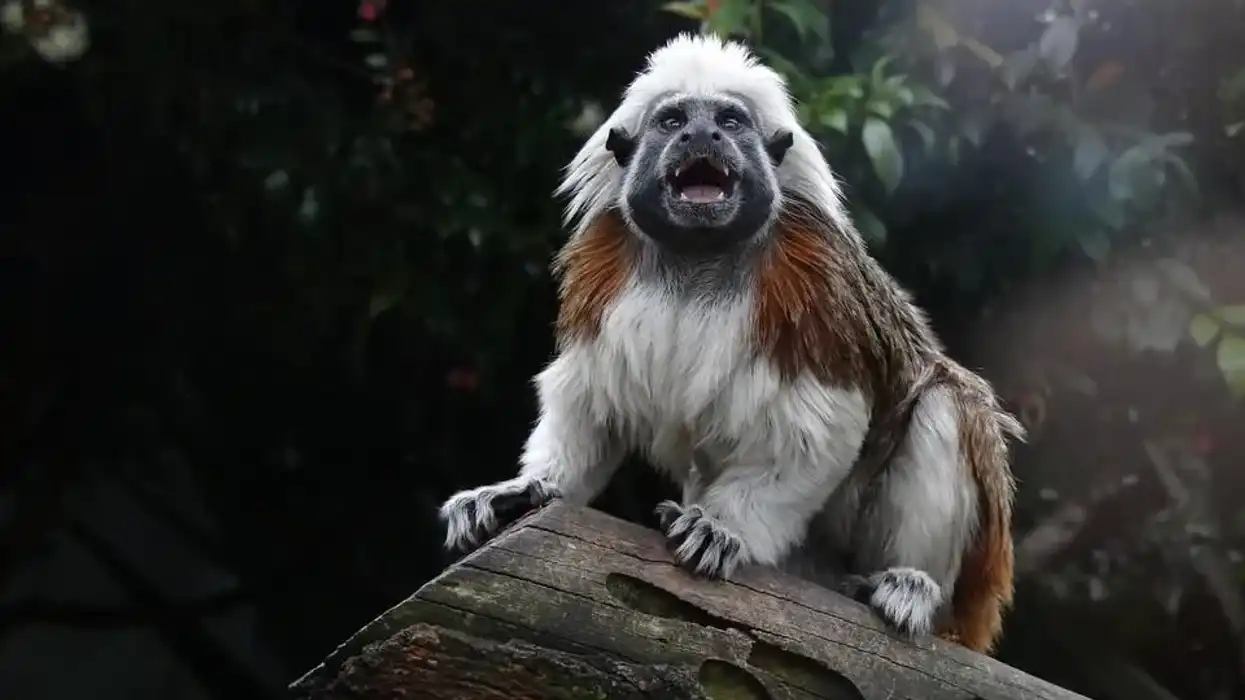Shama thrush, or simply shama thrush (Copsychus malabaricus), is a tiny muscicapidae family passerine bird that is native to the Indian subcontinent. This bird can be found living across thickly vegetated regions of Southeast Asia while feeding on a variety of insect species.
The white-rumped shama (Copsychus malabaricus) also features in the famous book, Birds of North America.
Previously this bird was categorized under the thrush family but has now been assigned to the muscicapidae family. The white-rumped shama (Copsychus malabaricus) has gained considerable popularity as an enclosure bird and vocalist.
Here are some interesting facts on the white-rumped shama (Copsychus malabaricus) for your perusal. Afterward, do check our other articles on nuthatch and chipping sparrow as well.
White Rumped Shama Interesting Facts
What type of animal is white-rumped shama?
The white-rumped shama is a muscicapidae family passerine bird. This bird is generally known as the shama thrush or simply shama thrush.
What class of animal does white-rumped shama belong to?
The white-rumped shama thrush or simply shama belongs to the bird class of animals of the genus Copsychus. It is a bird species from the thrush family native to regions in South Asia, including Myanmar, Thailand, Andaman Islands, Indian mainland, China, Malaysia.
How many white-rumped shamas are there in the world?
There are no estimates available regarding the exact population of the white-rumped shama (Copsychus malabaricus) in its natural habitat. The population of the bird varies according to species as well as island forms across the world.
As per IUCN Red List, the conservation status for this bird is that of least concern, so their survival is not facing any extinction threats.
Where does white-rumped shama live?
The habitat of the white-rumped shama (Copsychus malabaricus) from the thrush family varies according to the subspecies but is primarily concentrated around southeast Asia.
The race indicus of shama thrush is found along with north India; the race albiventris is native to the Andaman Islands, race minor is native to China, race tricolor can be found in Java, Sumatra, and Belitung.
The race mirabilis is native to the Strait of Sunda, while the race interpositus can be found in regions of Thailand and Myanmar.
What is a white-rumped shama habitat?
The regular habitats of the white-rumped shama thrush are in Southeast Asia, especially in lowland broadleaf forests, valley forests, bamboo forests. This species is predominantly found in valley woods, where this member of thrush family homes in the undergrowth or low trees of swamp broadleaf forests.
The eggs of these cage birds laid by the females are white to pale blue in color with some brown blotching.
Who does white-rumped shama live with?
Male white-rumped shamas are normally monogamous; however, outside of the mating season, males can become hostile against females. It is critical to observe the behavior of male white-rumped shama thrush and remove females if hostility is displayed. Because of this behavior, shama birds are rarely seen in big groups.
How long does white-rumped shama live?
In the wild, white-rumped shamas can live for up to seven years. This is the standard age limit for all members of the thrush family.
How do they reproduce?
The white-rumped shama is a secretive and reclusive member belonging to the thrush family but is an extremely territorial bird. During the mating season, the territories are shared by males and females, with the male guarding the territory and both exhibiting a distinct flight pattern with rising and falling movements.
This species breeds throughout South Asia from December to August, but primarily from the end of March to July.
After the mating process is over, the female lays a clutch of three to five eggs. Shama eggs range in color from white to pale blue, with varying hues of brown blotching.
What is their conservation status?
The IUCN classifies the white-rumped shama bird species as that of least concern in terms of its population. Despite the fact that the shama population trend appears to be declining, the rate of decrease is not thought to be fast enough to be of any concern.
White-Rumped Shama Fun Facts
What does white-rumped shama look like?
The male white-rumped shama is glossy black with a chestnut belly and white back end, and external tail feathers. Females are predominantly gray-brown in color and are generally shorter than males. The bill of both sexes is dark, while the feet are pink. Adolescents are grayish-brown colored in appearance, like females, and have a dotted chest.
How cute are they?
The color on this bird is a sight to behold, as this species is so gorgeous with their body color pattern, which makes them more adorable and cute.
How do they communicate?
These birds make a tschak or tck call to communicate with the other birds of the species.
How big is white-rumped shama?
The white-rumped shama is five times bigger than the Bee hummingbird. A white-rumped shama’s average length is about nine to 11 in (23-28 cm) while the wingspan is 10.5-11.5 in (27-29 cm).
How fast can a white-rumped shama fly?
The exact flying speed of these birds has not been measured, but this member of the thrush family is known to be a swift flyer.
How much does white-rumped shama weigh?
The white-rumped shama weighs roughly around 1.0-1.2 oz (0.02-0.03 kg) and is 18 times lighter than the American tree sparrow.
What are the male and female names of the species?
There is no specific name for a male and female white-rumped shama. Members of this species are known as males and females, respectively.
What would you call a baby white-rumped shama?
There is no specific name for a baby white-rumped shama, but they are generally called young ones or juveniles of white-rumped shama.
What do they eat?
While living in the natural wild habitats, the white-rumped shama consumes various types of insects, such as worms and crickets.
Are they dangerous?
No, members of the thrush family are not dangerous to humans. However, this species doesn't mingle with other birds easily, mainly in a cage environment, as they are aggressive towards other birds.
Would they make a good pet?
Yes, this species actually gained popularity as pets with their good qualities as cage birds and are also known as songbirds. You can certainly keep them as pets.
Did you know...
Shama thrush appeared on the $50 notes of the Monetary Authority of Singapore's Bird Series currency notes issued between 1976 and 1984. Furthermore, this species was represented twice on Singapore postal stamps (50-cent stamps) in 1962 and 1978.
The white-rumped shama's song was first recorded in 1889. This happened to be amongst the earliest recordings ever of a bird song.
White shama thrush is a non-migratory bird species.
What is the call of white-rumped shama?
White-rumped shama, both male and female, frequently vocalize within their territory. When foraging or disturbed by disturbance inside their area, they frequently call with a melodious tschak or tck. They also utilize their cry to alert others to their presence.
Is white-rumped shama a popular cage bird?
Yes, the white-rumped shama is a popular cage bird because of their melodious song. These birds also enjoy mimicking the songs of other birds.
Here at Kidadl, we have carefully created lots of interesting family-friendly animal facts for everyone to discover! For more relatable content, check out these kiwi facts and pelican facts pages.
You can even occupy yourself at home by coloring in one of our free printable white rumped shama coloring pages.









